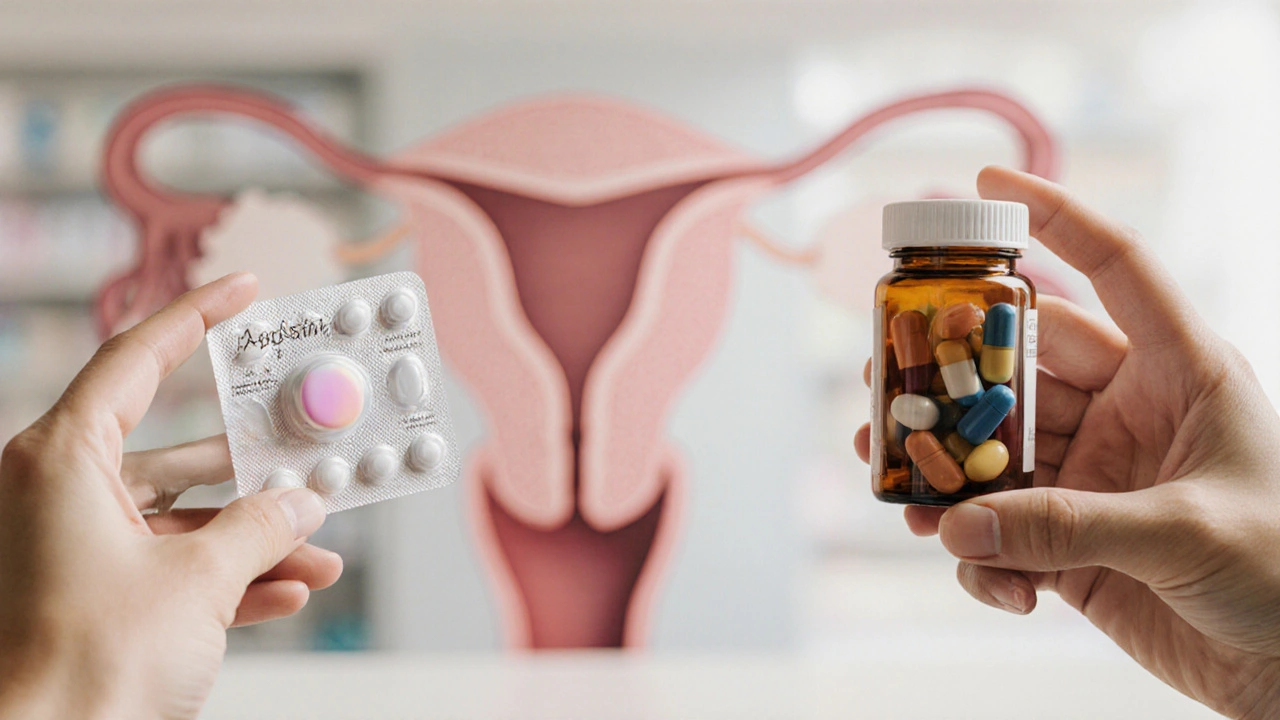Aygestin Comparison: What You Need to Know
When looking at Aygestin comparison, Aygestin is a synthetic progestin (norethindrone acetate) used for hormone therapy, menstrual disorders, and certain cancers. Also known as norethindrone acetate, it’s often weighed against other synthetic hormones to decide the best fit for a patient.
One of the first things to understand is that Aygestin belongs to the broader class of progestin, synthetic compounds that mimic the natural hormone progesterone. Progestins are the backbone of many hormone therapy, treatment plans that balance estrogen and progesterone to manage menopause symptoms, protect the uterus, or treat hormone‑sensitive cancers. Knowing how Aygestin sits within this family helps you see why dosage, side‑effects, and target conditions matter so much.
Key Factors to Compare
When you line up Aygestin against other progestins like medroxyprogesterone or dydrogesterone, three factors usually dominate the conversation. First, dosage form—Aygestin comes in 5 mg tablets, which can be split for finer adjustment, while some alternatives use higher‑dose capsules. Second, the risk profile—studies show Aygestin carries a modest increase in breast‑cancer risk, especially when combined with estrogen, so patients with a personal or family history need close monitoring. Third, the indication range—Aygestin is approved for endometriosis, abnormal uterine bleeding, and as part of adjuvant therapy for certain breast cancers, whereas other progestins might focus more on contraception or menopausal relief.
Endometriosis, for example, is a condition where tissue similar to the uterine lining grows outside the uterus, causing pain and infertility. Endometriosis treatment, often involves hormonal suppression to shrink ectopic tissue. Aygestin’s ability to provide consistent progesterone support makes it a common choice, but clinicians compare its efficacy against GnRH agonists or levonorgestrel IUDs to pick the most tolerable option. Likewise, when evaluating breast‑cancer risk, doctors weigh Aygestin’s anti‑estrogenic effect against the potential for hormone‑driven tumor growth, a balance that differs from the profile of other progestins.
Practical tips for anyone navigating an Aygestin comparison start with a clear medication history. List every hormone you’ve taken, note any side‑effects like weight gain, mood changes, or bleeding irregularities, and bring that record to your appointment. Ask your provider how Aygestin’s half‑life (about 8 hours) influences dosing schedules compared to longer‑acting alternatives. Also, discuss bone health—some progestins help maintain calcium, while others may not—so supplement plans can be tailored accordingly.
By keeping these points in mind, you’ll be better prepared to ask the right questions and understand the trade‑offs each option presents. Below you’ll find a curated set of articles that dive deeper into dosage nuances, side‑effect management, and specific condition‑focused comparisons, giving you a solid knowledge base to make an informed choice.

Aygestin (Norethindrone) vs Other Progestins: A Practical Comparison
A clear, side‑by‑side look at Aygestin (norethindrone) versus other progestins, covering uses, side effects, costs and how to pick the right option.